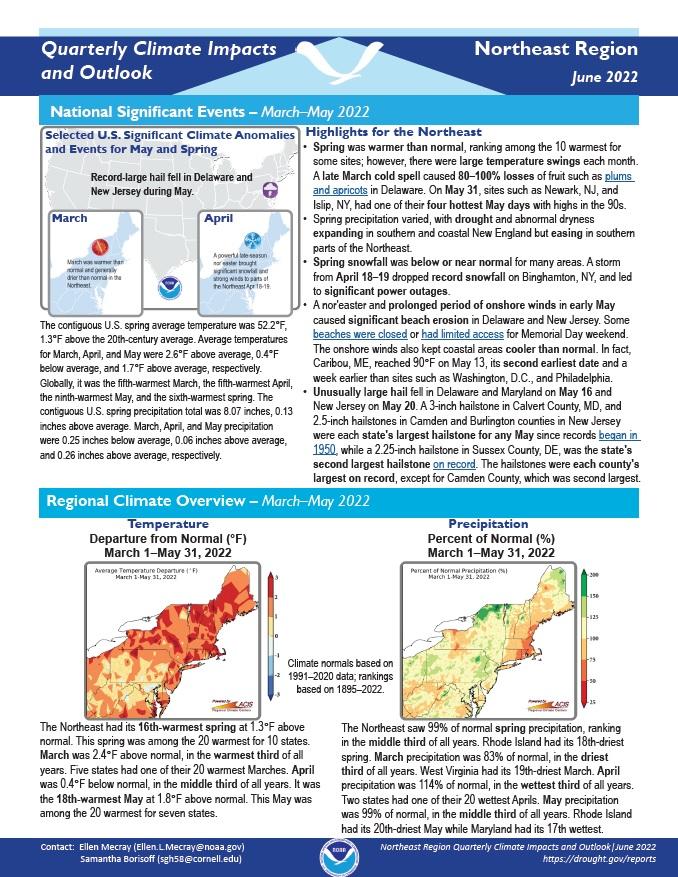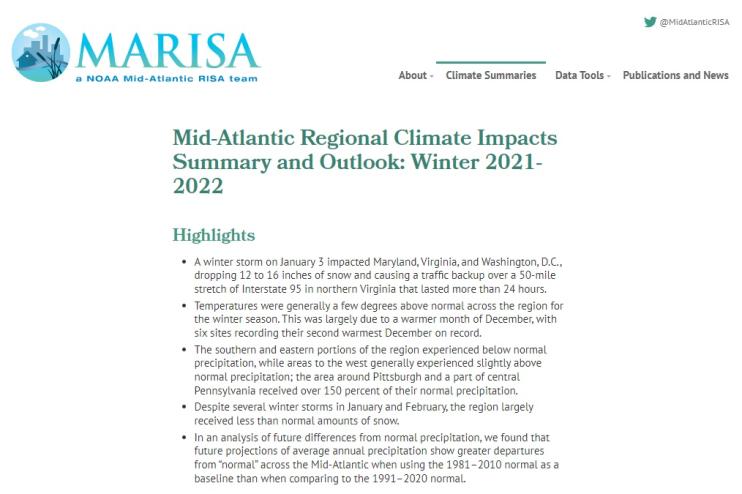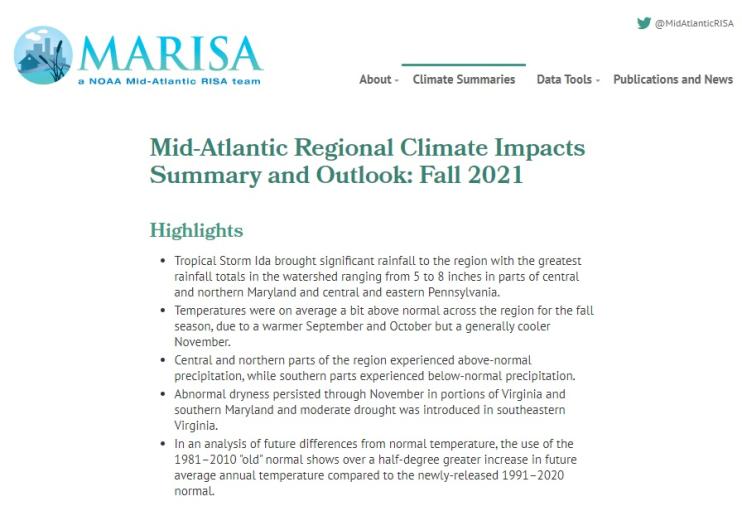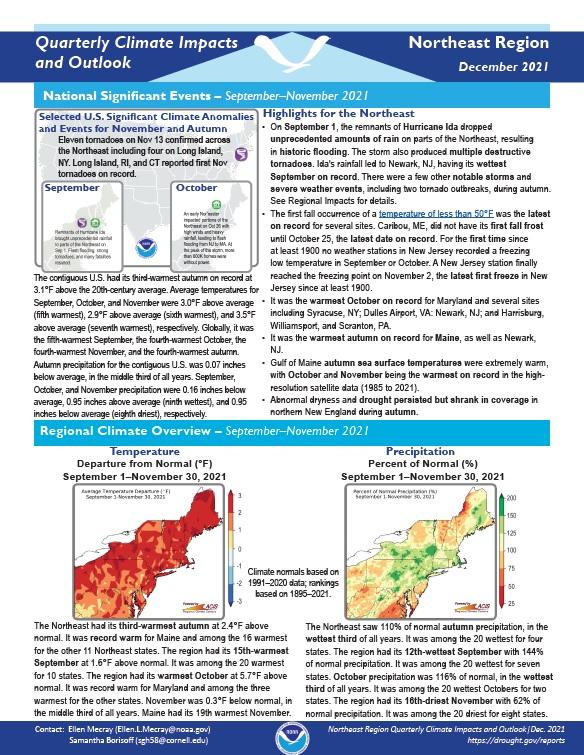For the latest forecasts and critical weather information, visit weather.gov.
Quarterly Climate Impacts and Outlook for the Northeast Region for March–May 2022. Dated June 2022.
Spring was warmer than normal, ranking among the 10 warmest for some sites; however, there were large temperature swings each month. Spring precipitation varied, with drought and abnormal dryness expanding in southern and coastal New England but easing in southern parts of the Northeast.
Quarterly Climate Impacts and Outlook for the Mid-Atlantic Region for December 2021 - February 2022. Dated March 2022.
Temperatures were generally a few degrees above normal across the region for the winter season. This was largely due to a warmer month of December, with six sites recording their second warmest December on record. The southern and eastern portions of the region experienced below normal precipitation, while areas to the west generally experienced slightly above normal precipitation.
Quarterly Climate Impacts and Outlook for the Northeast Region for December 2021 - February 2022. Dated March 2022.
The Northeast's winter average temperature was 0.7°F above normal, ranking in the warmest third of all years. Six states had one of their 20 warmest winters. The Northeast saw 88% of normal winter precipitation, ranking in the middle third of all years. This winter was among the 20 driest for four states.
The National Weather Service developed 2022 Spring Hazard Outlooks in coordination with NOAA's National Centers for Environmental Information (NCEI) and National Integrated Drought Information System (NIDIS); High Plains Regional Climate Center; Midwestern Regional Climate Center; U.S. Department of Agriculture; and National Interagency Fire Centers' Geographic Area Coordination Centers. This outlook highlights the various spring hazards that could occur and potential impacts across the Ohio River Valley.
Quarterly Climate Impacts and Outlook for the Mid-Atlantic Region for September - November 2021. Dated December 2021.
Temperatures were on average a bit above normal across the region for the fall season. Central and northern parts of the region experienced above-normal precipitation, while southern parts experienced below-normal precipitation.
Quarterly Climate Impacts and Outlook for the Northeast Region for September - November 2021. Dated December 2021.
The Northeast had its third-warmest autumn at 2.4°F above normal. It was record warm for Maine and among the 16 warmest for the other 11 Northeast states. The Northeast saw 110% of normal autumn precipitation, in the wettest third of all years. It was among the 20 wettest for four states.
This handout provides information on the typical La Niña winter pattern; the precipitation implications; other factors; and the winter outlook for the Northeast region. Updated November 2021.
NOAA’s Regional Climate Services Program created these outlooks to inform the public about climate impacts within their respective regions. Each regional report contains easy-to-understand language, and anyone can access them through the Drought Portal.
Quarterly Climate Impacts and Outlook for the Mid-Atlantic Region for June - August 2021. Dated September 2021.
The majority of the Mid-Atlantic experienced temperatures 1-2 degrees Fahrenheit (F) above normal and some sites had among one of their warmest summers on record. The Mid-Atlantic saw generally above normal precipitation, notably in southern New York and northern Pennsylvania, while some areas in Maryland, Virginia, and the panhandle of West Virginia experienced below normal precipitation.
Quarterly Climate Impacts and Outlook for the Northeast Region for June - August 2021. Dated September 2021.
The Northeast had its sixth-hottest summer at 1.5°F above normal. This summer was among the 20 hottest for all 12 states. The Northeast had its 10th-wettest summer with 116% of normal rainfall. This summer was among the 20 wettest for seven states.










